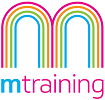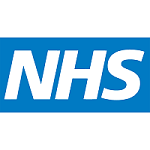15 Top Tips for Optimising Websites to Improve Conversion
Convert more visitors to enquiries and sales
WHAT COURSE ARE YOU LOOKING FOR?
-

15 Top Tips for Website Optimisation to Increase Enquiries & Sales
4 May 2020How to increase your website conversions and get more sales and leads
Did you know that a 1% increase in website conversion is likely to provide more leads/revenue that getting 30% more visitors to your site?
Ongoing website optimisation should be a key part of your digital marketing strategy, but it is often overlooked.
So here are some key tips that will improve the usability of your website and increase the number of visitors you convert into enquiries and sales.
If you want a more help take our Website Optimisation course. It has a max of 6 delegates so we look at your site and give you lots of tips on how it can be optimised.
15 Expert Tips for Website Optimisation
1. Make sure your Value Proposition is clear on all key landing pages
Within 10 seconds of arriving on your landing pages, visitors should be in no doubt about:
- What you offer
- Why they should choose you.
Check if this is true for all your key landing pages – not just your home page.
2. Make sure your pages are task orientated
List and prioritise the things you want your visitors to do on a page.
Look at your pages: Do they focus on the key tasks visitors want to do?
Don't focus on what you want to tell them - focus on what your visitors want.
Then check that it obvious, simple, and quick for the visitor to complete these tasks. Think about how you could make it easier for them?
3. Use mega menus to improve navigation and understanding

Unless your website is just a few pages you should give your visitors a big menu to allow them to get to the content they want quickly.
These menus will also serve as a guide to what you have to offer.
You can add pictures and descriptive text in your menus - not just links.
Take a look at Marks & Spencers menu - it is a great example of a Mega Menu.
4. Use your Metadata wisely
If a visitor has found you through a search on a search engine, the first thing they will see is your metadata.
Check your meta-titles and descriptions. Is it clear what you have to offer? Do they make people want to click through to find out more?

This is your pitch to them to choose you not someone else. If you don't know how to optimise your meta-data come on our SEO course.
5. Make iyour pages easy to skim read
Make sure you understand eye-flow and how website visitors consume website content.
This will ensure you have a clear understanding of how to structure your pages for fast, easy understanding.
If you fail to do this they will simply go back to Google and check out your competitors.
Check out your pages - are they easy to skim read? Is the content engaging? Do you meet the visitors' expectations in terms of quality and detail? What else might they want?
6. Make sure your headings and subheadings tell the story
Can the reader understand what the content of the page is about by just reading the headings?
Try re-writing the page starting with writing the headline and sub-headings to tell the story.
7. Use the right images/graphics to tell the story
Do the images and graphics on the page help to tell the story and get across your key messages?
Can you add captions to the pictures to reinforce your messages?
Are they suitable in terms of the demographics of your audience?
8. High quality content - the no 1 website optimisation factor
Spend time reviewing existing pages and making them better, richer, clearer.
Review your website's pathways to see the messages people are getting. Think about how you can improve their understanding and build their confidence and desire to continue to the next step.
Quality content usually means at least 300 words and ideally with pictures, infographics and/or video.
9. Make sure you understand SEO

Great SEO will drive lots more visitors to your site - for free.
When you are looking at your pages bear in mind the key ranking factors Search Engines use when evaluating your pages.
If you don't know SEO and you are building website content you need to find out what you should do. A great way to fast track your learning is to go on our SEO Course
10. Use great calls to action
If you think a Buy Now button is a great call to action - think again!
Buy Now buttons may be a barrier to conversion.
Think about the user and make sure you provide lots of calls to action that are appropriate to their stage in the buying cycle.
11. Test your website with user panels
Get some people who don't know your website to test it.
Give them some tasks to do on your site and watch what they do. Ask them to tell you what they are thinking as they try to do it.
This can often be a great way of identifying improvements you should make.
12. Test and improve your website speed
Source 1: Think with Google
I believe almost everyone will wait a few seconds for a page to load but you should make sure your website is as fast as it can be & focus on making sure visitors are not staring at a blank screen for too long.
Use site speed test such as PageSpeed Insights and Test My Site with Google to give you an idea of how fast your pages are and to give you suggestions on how to optimise the speed of your page downloads.
The example below shows that the user will get something (text or an image) in 0.9s and something 'meaningful' (eg the primary page content) in 1.1s although the overall page speed was about 3.8s.

13. Third-Party Endorsement
Reviews, testimonials, expert opinions, Quality Assurance logos, client logos, celebrity endorsement, trade body logos, star ratings; whatever you have you should use them.
Don't be coy - if someone else says you are great, trustworthy, fast, or 'Simpy the Dest' - don't forget to tell your customers.
14. Easy Forms / Checkouts
On average standard eCommerce sites get only a 1.8% conversion rate from visits to sales. (Source 3: Digital Marketing Institute)
But you can change this.
For example, 53% of people interviewed in a recent survey said that they abandoned their basket because of hidden costs, 31% because they had to set up an account, 23% because the Checkout process was too complicated. (Source 4: Baymard.com)
So make sure your costs are transparent, that you have a guest checkout facility, that you make the process quick and easy (eg One-page checkouts).
15. Use Google Analytics and Google Optimise
Google Analytics gives you lots of data about how visitors use your website. Use this free data to look for pages and pathways to improve.
With Google Optimise you can test multiple combinations of page elements such as headings, images, or messages to see what works best.Want to know more?
Take our one-day Website Optimisation course with Martin Woodfield. See details here Website Optimisation Online Course
If you want professional help to optimise your site just contact us.
Or watch this 85 minute webinar, Martin ran for the Leeds Digital Festival, where he provides advice on website optimisation:
Sources
1. Google/SOASTA, “The State of Online Retail Performance”
2. Smart Insights, April 2019
3. Digital Marketing Institute
4. Baymard.comAbout the Author
Martin Woodfield is a leading digital marketing consultant with over 15 years working with some of the UK's most successful organisations. He is a Fellow of the Chartered Institute of Marketing and a keynote speaker.
Martin also provides training on a range of Digital Marketing topics with M Training, University of Salford and other organisations.
Related Articles
-

Guide: Filter Internal Traffic in GA4
01 Mar 2024Keep your Analytics data accurate. Make sure you filter yourselves out of your Google Analytics reports - so you are only looking at real customers.
Read More -

7 Common PPC Mistakes...Which are Wasting Your Budget
05 Mar 2020Are you spending your PPC budget and not seeing much return? You could be making some of these common mistakes.
Read More -

Conversion Rate or User Conversion Rate? Which is the best metric?
09 Aug 2019Not many people really understand conversion rates when looking at their Analytics Reports - so what do they actually measure?
Read More






























